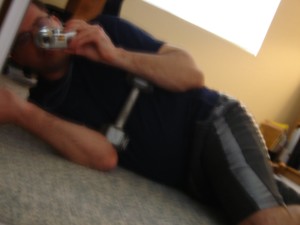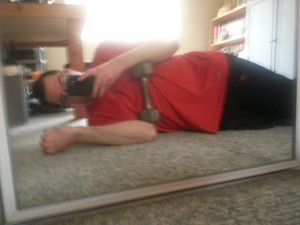Dihydrotestosterone is a determinant of calcaneal bone mineral density in men.
Full study link->DHT and IGF2
“Hundred osteoporotic men with age matched normal were studied for serum levels of sex steroids, PTH, IGF system components, cytokines and bone turnover markers. Our findings show that serum DHT, IGF-I, IGF-II and IGFBP-3 levels were significantly decreased while IL-1beta and bone turnover markers were significantly increased in osteoporotic men compared to normal. Pearson correlation analysis revealed that serum DHT, IGF-I, IGF-II and IGFBP-3 levels were positively and strongly correlated with BMD, while serum IL-1beta levels were negatively correlated with BMD. Serum PTH, testosterone, estradiol, IGFBP-4, TNF-alpha, IL-4 and IFN-gamma levels were similar between the two groups. We observed that DHT levels significantly declined with age. However, the significant difference in DHT between the osteoporotic and normal groups is the same regardless of age. A multiple regression model adjusted for age demonstrated that DHT/BMD association is fairly stronger among those with osteoporosis than the normal. Our findings for the first time point out that DHT is an important determinant of BMD in men. Most importantly, the strong positive correlation of serum DHT with BMD offers new perspectives in understanding the role of non-aromatizable androgen in regulating bone metabolism in men, and might serve as a potential clinical marker in the diagnosis of male osteoporosis.”
Serum levels of estrogen and testosterone are slightly lower in osteoperotic men than normal.
| IGF-II | 955 ± 45(Normal) | 722 ± 35(Osteoperotic) |
“DHT increased the levels of IGF-I and IGFBP-3 in human osteoblastic cell line (hFOB/AR-6). DHT enhances the mitogenic effect of IGF-II in bone cells.”
This is the study that mentions the link between IGF-II and DHT:
Studies of the Mechanism by which Androgens Enhance Mitogenesis and Differentiation in Bone Cells
DHT did not increase the quantity of IGF-2.
“Because FGF and IGF-II are known to synergize with TGFB, the enhanced response to FGF and IGF-II due to DHT treatment may be dependent upon the increased production of TGFB.”
DHT pre-treatment approximately doubled the effect of IGF2.


